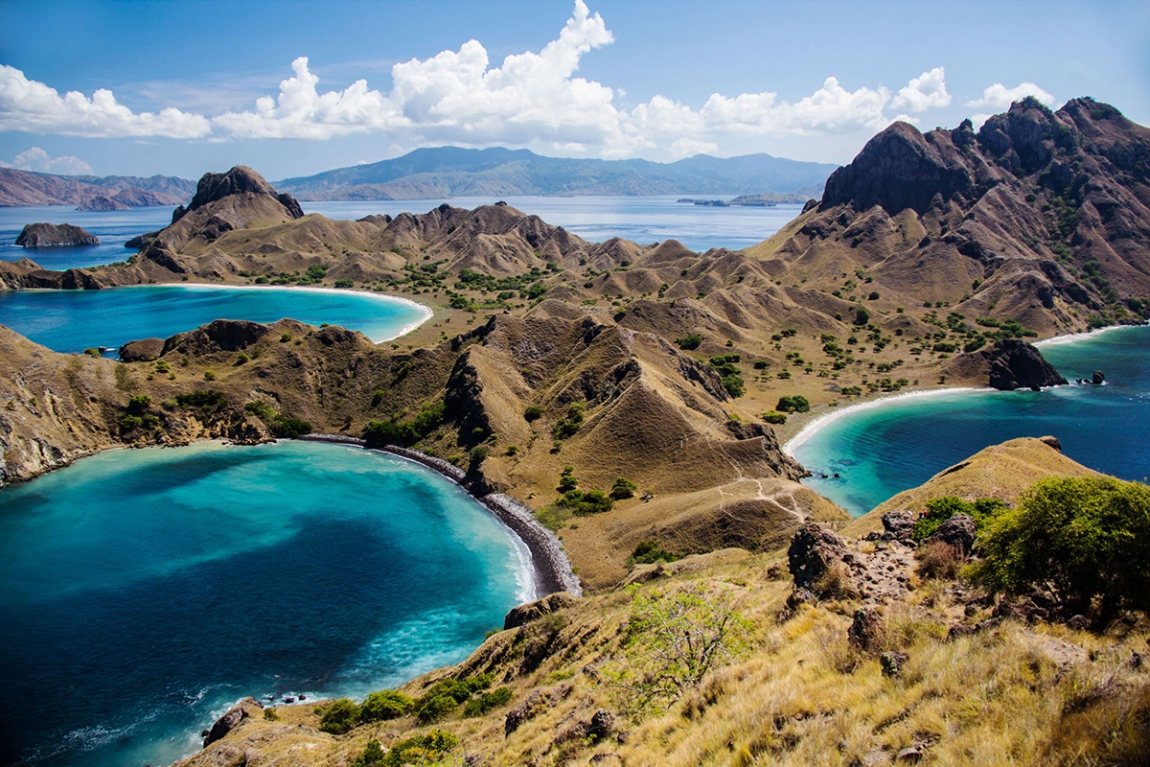Komodo National Park is a unique marine sanctuary created by strong currents carrying nutrient-rich waters that support an incredible array of marine life, and where the main activity is scuba diving with a wide choice of liveaboard cruises and resorts for scuba divers. Komodo National Park consists of three main islands Komodo, Padar, and Rinca, as well as many smaller ones, making 80 in total, located between the large islands of Sumbawa and Flores, right in the middle of a forced passage of the currents and tides that unite the Pacific and Indian oceans. And if you're a scuba diver, you've probably got it all figured out: yes, Komodo dives are legendary! Komodo's unpredictable and strong currents attract monstrous amounts of fish.
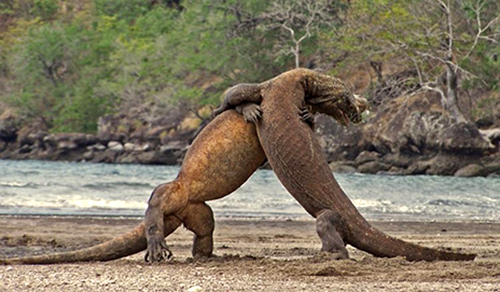
Last update: January 21, 2023
KOMODO NATIONAL PARK
Scuba Diving Sanctuary in Indonesia
1. DIVE AND SAIL KOMODO ISLANDS
6. LUXURY CRUISES & CHARTERS IN KOMODO
1. DIVE AND SAIL KOMODO ISLANDS
Komodo offers extraordinary world-class diving adventures with an astonishing variety of sites, coral gardens, pinnacles, walls, caves and calm bays ideal for photographers interested in macro photography, always on the lookout for oddballs. In the Komodo National Park, more than 1000 species of fish, 260 species of coral, 70 types of sponges and particularly a very high number of red tubipora coral, responsible for the beautiful pink sand beaches distributed throughout the archipelago, have been registered. Reef sharks, sea turtles, dugongs, and dolphins frequent Komodo's waters; In some periods of the year it is possible to see whales with their calves, eventually the passage of a solitary whale shark has been reported. The Komodo seabed is home to everything from the majestic squadron manta, to schools of tuna, jackfish, barracuda and large schools of silverfish, to small and beautiful nudibranchs, pygmy seahorses and various types of crustaceans. It is not uncommon for divers to spot new species of bizarre and strange "critters."

Komodo National Park offers stunning dive and sail opportunities, contact now a Liveaboard Specialist
The Komodo Dragon
The Komodo monitor lizard is the largest living lizard on earth, it can measure up to 3 meters and weigh more than 200 kilos. It is claimed that they are the last living dinosaurs on earth, indeed the Komodo monitor lizards come from prehistoric times, although science discovered them only recently, in 1912. A carnivorous animal, the Komodo dragon feeds on the abundant wildlife of the park: wild boars, goats, deer, buffalo. Larger prey are caught in an ambush in the tall grass. A small bite is enough and the Komodo's saliva -with a very high load of bacteria- causes the victim to die from septicemia in a few hours. Komodos are voracious animals, they can devour a goat in 5 minutes.
Each cruise includes short treks to Komodo or Rinca to observe the Komodo monitor
Trekking and excursions in the Komodo Park
On each cruise, walks are planned in the Komodo National Park to observe the dragons. As well as an excursion to see the flight of the flying fox or fruit bat, where thousands of these enormous creatures leave their lairs on the Island of Kalong towards the Island of Flores to spend the whole night roaming the night in search of food, the phenomenon It is impressive, as the evening sky is covered with thousands of flying foxes.
2. DIVE SITES
Komodo has a reputation for being a diving area for experienced divers. This is true, especially if you want to visit on Komodo by liveaboard. Komodo has many dive sites with strong and sometimes unpredictable currents. Water temperatures change often and are sometimes far below the usual 28°C you will find in other parts of the Indonesian archipelago. In the southern area of Komodo National Park water temperatures may be as low as 19°C. We advise a 5-mm wetsuit before diving Komodo to avoid any cold dives!
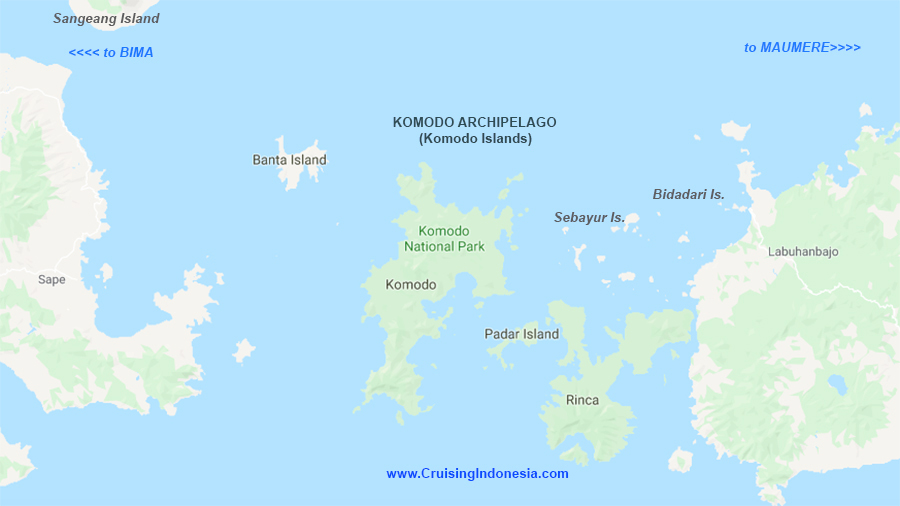
Map of Komodo Archipelago
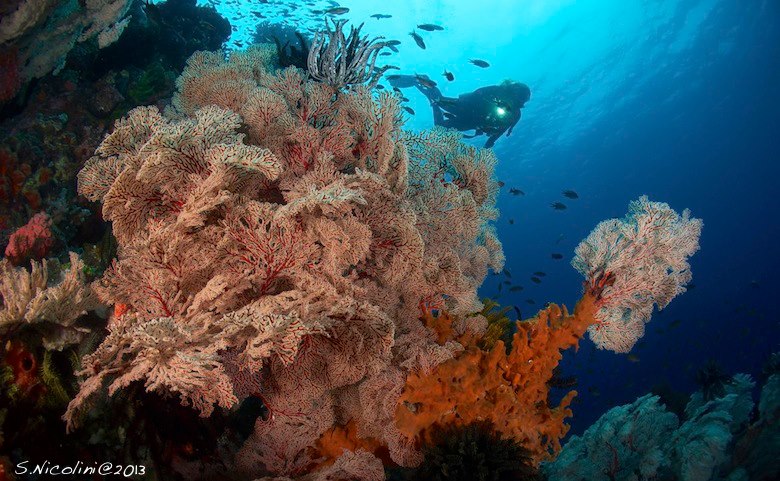
Northern Komodo Dive Sites
Batu Bolong
Batu Bolong is a rock pinnacle that lies between the islands of Tatawa and Komodo. For many divers, Batu Bolong is Komodo's signature dive site. The reef is in superb condition and has not been targeted by fishermen due to the rock's topography and exposure to strong and in some points, down-welling currents. The top of the Batu Bolong reef is covered with colourful hard corals, whilst the walls and slopes are covered by large sponges. Always be on the lookout for some of the impressive amount of invertebrate life and thousand of reef fishes living in the coral gardens; and for the large fish like giant trevally, sharks, napoleon wrasses, dogtooth tunas along the step walls. Strong currents around Batu Bolong ensure an awesome volume of fish including schools of fusiliers and surgeons.
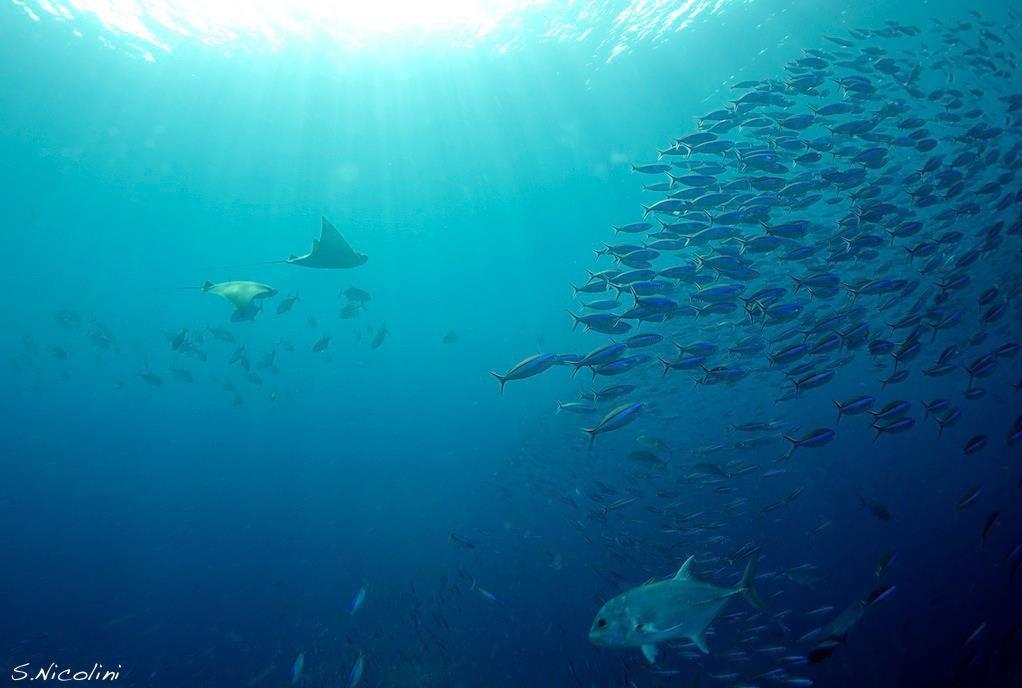
Castle Rock
Castle Rock is a huge underwater formation in the middle of the sea, with several pinnacles rising from a shelf 20-24 metres deep to 4 meters below the surface. Because Castle Rock is in open water the visibility is excellent, and as you have already guessed, is prone to very strong currents. As the current is generally much stronger at the surface than in the deeper waters, Castle Rock is recommended for experienced divers in conditions of strong current. Otherwise, fish action is guaranteed with giant trevally, spanish mackarels, and giant jacks attracted by schools of fusilier and surgeon. Not to mention the dolphins; eagle and manta rays; and white tip and black tip reefs sharks.
Crystal Rock
Crystal Rock is a fine example of how Komodo truly represents diving diversity. Sitting about 300 meters from Castle Rock, Crystal Rock is a pinnacle that becomes exposed at low tide.
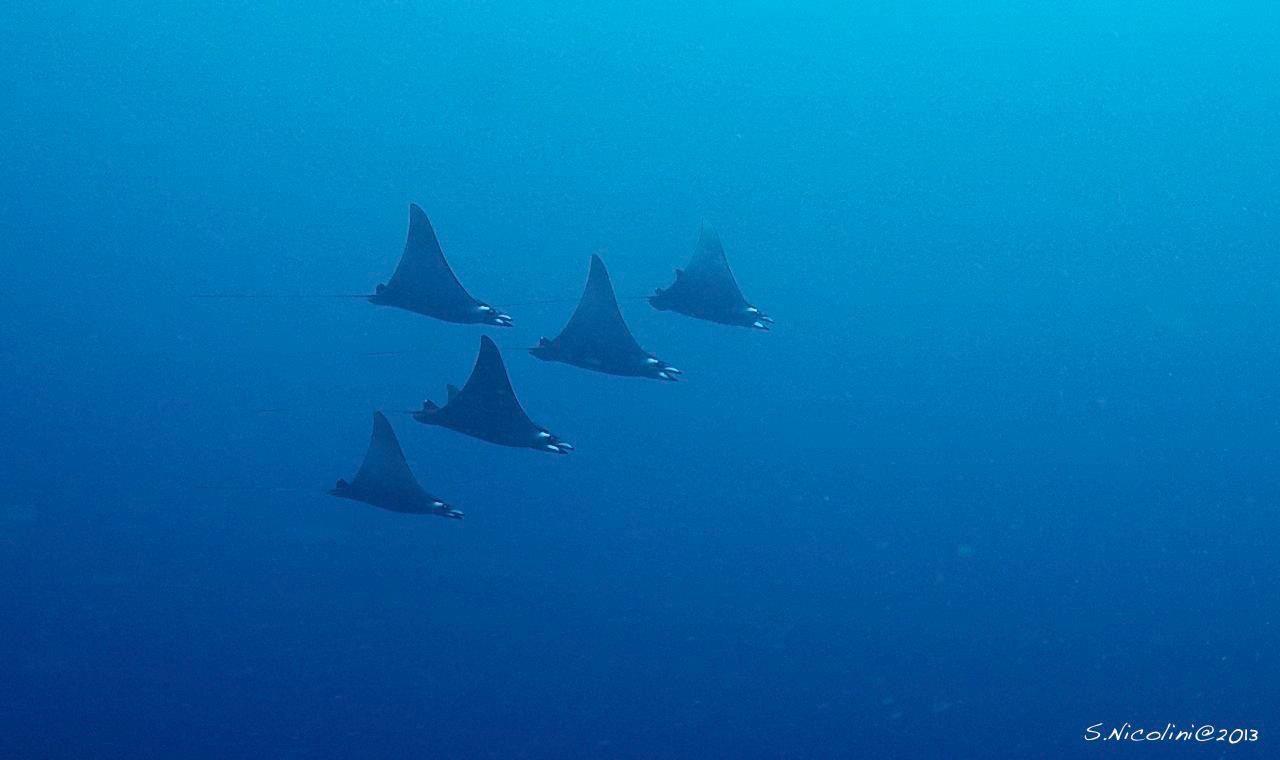
Like Castle Rock, the currents can be pretty strong, though shelter from the current can be found in the shade of the big rock, where a beautiful coral garden rich in fan corals hides the tiny pigmy seahorse - perfectly camouflaged to blend in with his surroundings (but not enough for the expert eyes of a local dive guide).
The Cauldron
As the name might suggest, The Cauldron looks like the top of a boiling pot. The Cauldron is a drift dive along the channel between Gili Lawa Laut and Gili Lawa Darat offering a nice opportunity to watch the predator/prey action: as schools of smaller fish are threatened by reefs sharks and other larger pelagic species.
The Cauldron is for seasoned divers only!
Tatawa Kecil
Rocks, caves and beautiful coral gardens form the seabed of this small island. Many reef fish and an incredible number of anthias swim among the corals. Dugongs and manta rays have been seen quite frequently in the southern part of the island.
Tatawa Besar
Great for reef fish and endless fields of orange soft coral, manta rays are often seen in this area. Excellent drift dives to 15-20 meters.
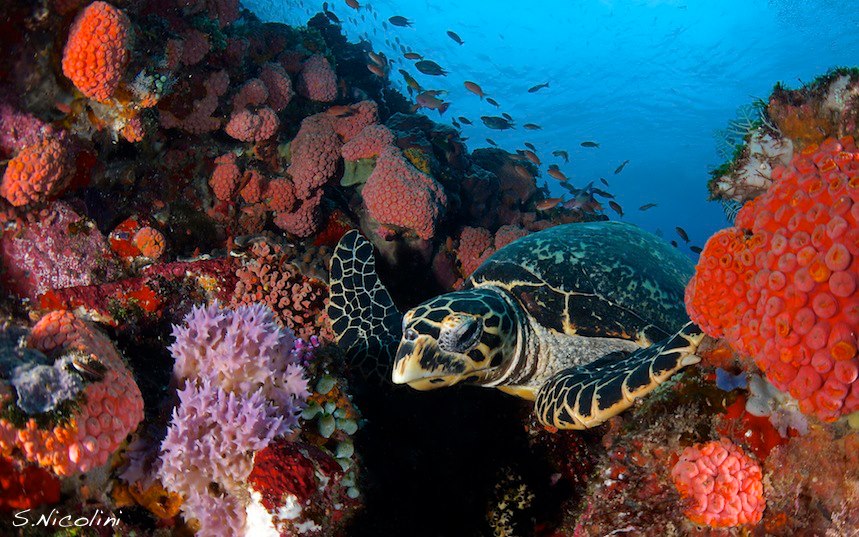
Karang Makassar
Karang Makassar is snorkelling only, as diving will disturb the Manta Rays that come here for cleaning. Please do not dive here to not disturb manta rays. The reef does not have much in the way of corals or fish life, this location is manta rays aggregation site. The best way to find mantas is to cruise along the eastern face of the reef until you see them on surface. The best time to spot Manta Rays here is during rising tide. There can be as many as 40-50 mantas together here.
Batu Tiga
Batu Tiga is an excellent "big fish" dive. Large boulders in deeper water to the west offer habitat for grouper, mantas, giant trevally and other pelagic species. Most of the coral at Batu Tiga is stunted due to the strong prevailing currents.
Wainilu
The main attraction of Wainilu is undoubtedly the amazing mandarin fish - surely one of the most colourful animals every to share our planet. Photographers get your equipment ready!
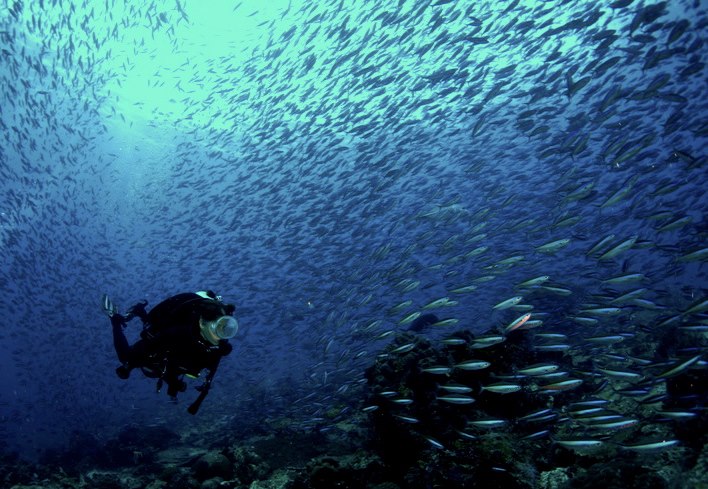
Southern Komodo Dive Sites
Pillarsteen
Pillarsteen is a rock pinnacle off the shores of Padar Island. It is an amazing reef covered with an head-spinning variety of soft corals, frequented by large schools of fusiliers found along the reef slope. It is not unusual to encounter sharks and turtles at Pillarsteen. As well as a fascinating landscape, Pillarsteen offers an array of interesting dives that will take you through caves, chimney stacks and rocky outcrops at different depths.
The Three Sisters
In close proximity to Pillarsteen, The Three Sisters are three large submerged rocks, sitting on a sandy bottom in about 20 meters of water, rising to 3 - 5 meters from the surface. The Three Sisters is a very pristine site covered in coral growth and rich in marine life.
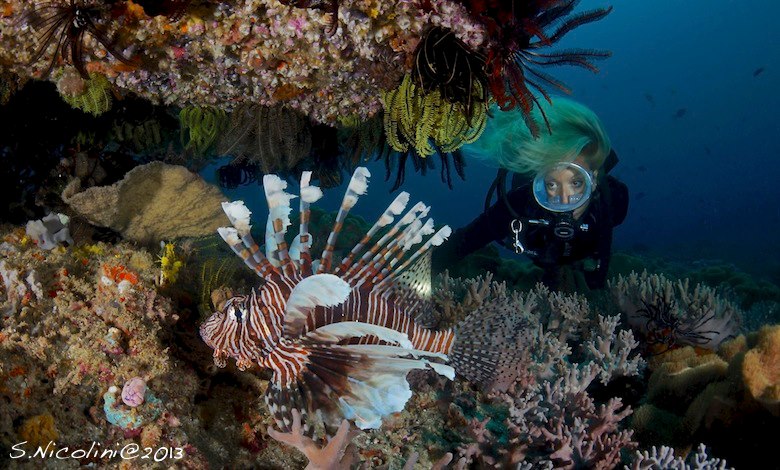
Langkoi Rock
Langkoi Rock can be a real adrenalin rush at the right time. From July to September many sharks such as grey reefs, white-tip reef sharks, hammerhead and bronze whalers aggregate around this site.
Manta Alley
Manta Alley is another of Komodo big attractions, and the main location to find mantas. Mantas can usually be seen feeding here between September and January. Manta Alley is also noted for very large giant trevallies, sharks, beautiful corals and a high diversity of invertebrate life in relatively shallow waters (between 5-20m of depth). The waters can also be cool and affected by currents. Due to the low temperatures experienced in the southern dive sites of Komodo (22°-24° C), it is highly recommended to wear a 3-5mm full wet suit.
German Flag
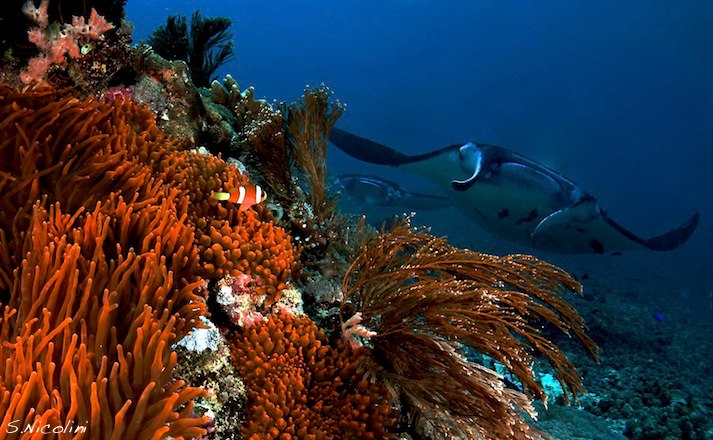
From September to January high densities of plankton attract many large manta rays that can normally be seen swimming on the surface along the shores and rocks of Southern Komodo Island. The shallow waters around the shores (5-20m deep) are littered with large rocks and boulders that shelter huge grouper, potato cod, napoleon wrasse, schools of surgeon fishes and red snappers.
Yellow Wall
Komodo's Yellow Wall is great place to take in the invertebrate diversity of Indonesia, especially during night dives. The walls are packed with a mind boggling array of marine life and color - stunning soft corals, Spanish dancer nudibranchs, colourful sea urchins, bright red sea apples as well as a huge variety of tunicates. Crevices in the walls are home to sleeping fish, spiny and slipper lobsters, cleaner shrimps and decorator crabs. Nocturnal marine life at Yellow Wall includes sleeping coral trout, cat sharks, all kinds of cardinal fishes and parrot fishes in their mucus cocoon.

Crinoid Corner
Crinoid Corner is a small cove just outside the island of Nusa Kode, almost directly opposite Yellow Wall. A lot of small invertebrate sea life can be found on and in the crevices of a very colourful wall. The angle of the morning sun makes Crinoid Corner is a great place to dive early in the morning. The lack of current makes the dive nice and easy, ideal for all levels of diver.
Cannibal Rock
This dive site is famous for its variety and colourful invertebrates. Cannibal Rock is awash with rich soft corals as well as sea apples and others sea cucumbers species. Among the surprises are fire urchins with Coleman shrimps. The fish life can also be good at Cannibal Rock with an array of scorpion fish, schools of red snappers and surgeon fish. Unusual fish such as the pigmy seahorse and frogfish can also be spotted.
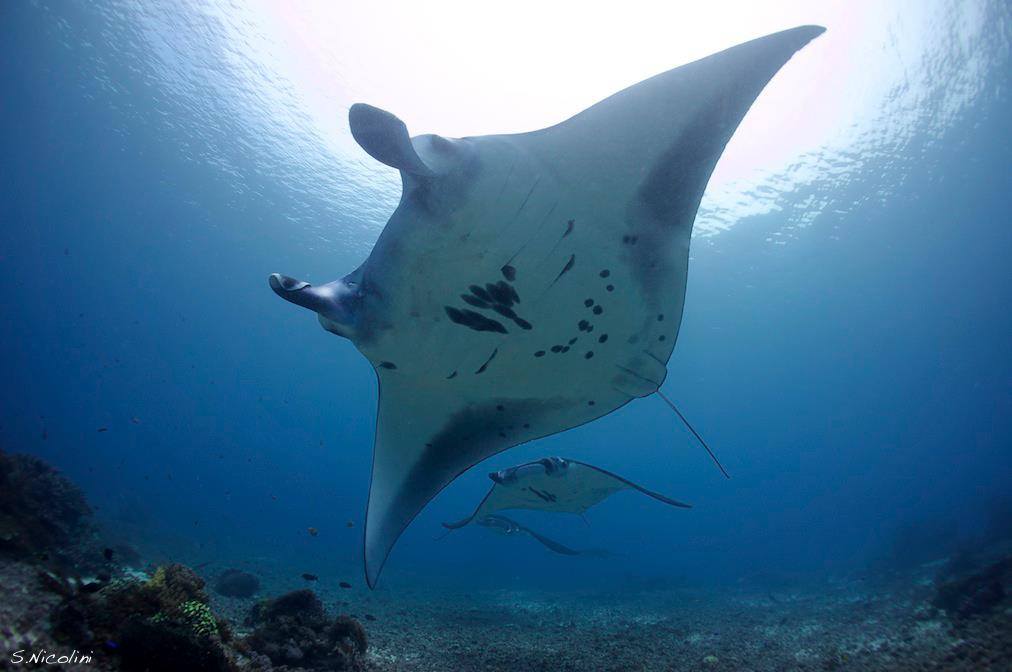
This is other amazing place where komodo dragons can be spotted in the wild.
Padar
Padar is a small island between Komodo and Rinca, the seabed is rich in caves, towers, chimneys and rocks of interesting topography, all very well covered with anemones, sponges, gorgonians, sea turtles, in short rich in marine life.
Rincha, Kode and Motong Islands
Beautiful area to spend a few days anchored in the bay of horseshoe, a quiet cove between the mountains covered with vegetation, the beaches are visited by monitor lizards, wild boars, deer, monkeys, ospreys that nest in the tall trees of the islands so that it is easy for them to see the fishing and for us to observe them in full swing.
Many and nearby dive sites, large amounts of soft and hard corals, sponges, sea cucumbers of incredible colors, rare critters, stone fish, zebra crabs, frog fish and scorpion fish, as well as mantas and sharks.
3. KOMODO BEST DIVE RESORTS
There are few structures that can be considered as dive resorts in the vicinity of Komodo National Park: Komodo Resort on Sebayur Island, Angel Island Eco Resort on Bidadari Island and Kalimaya Dive Resort in the coast of Sape, and all these dive resorts operate year round.
Secluded Indonesian Dive Resorts
From our collection Secluded Indonesian Dive Resorts we offer you our selection of Komodo dive centers with dives just one step from the front door of your bungalow or villa.
Komodo Resort, Sebayur Island

Komodo Resort is ideally located in Sebayur Island next to Komodo National Park and open to diving year round
Angel Island Eco Resort, Bidadari Island
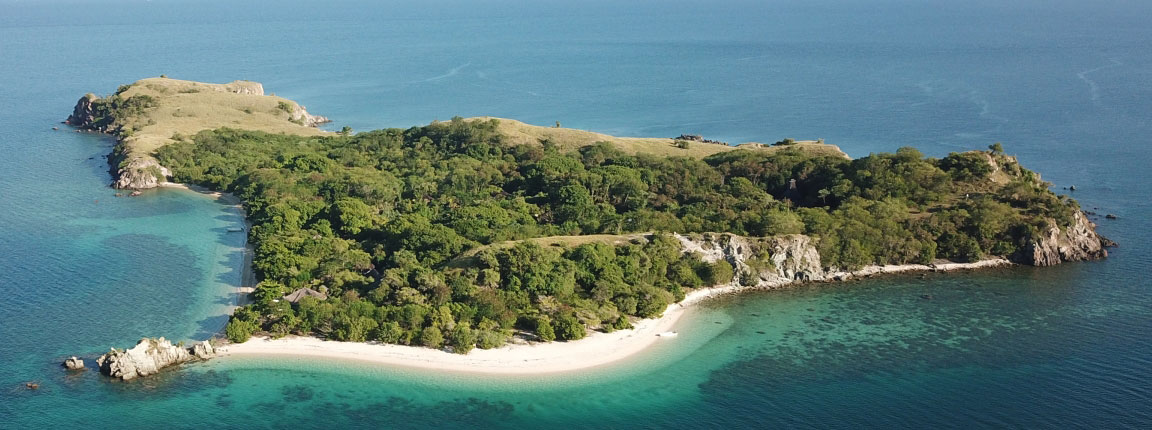
Angel Island Eco Resort is on a private island on the edge of Komodo National Park and open to diving year round
Kalimaya Dive Resort, West Komodo
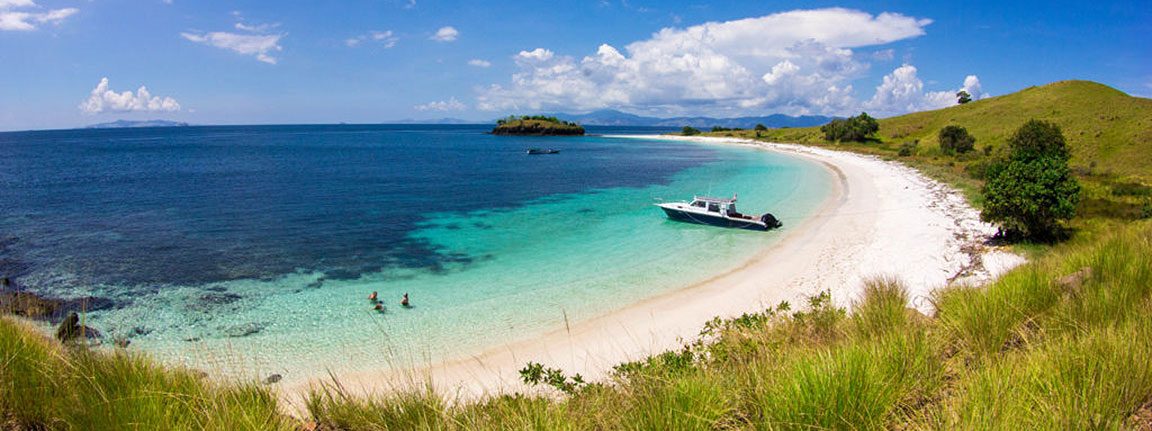
Kalimaya Dive Resort on Sape is open to diving year round
4. DIVING SEASON
Diving season: From April to November. Though diving is possible in Komodo year-round. Rainy season: November to April. Water temperature: Water temperature: 19-28°C. In the most dive points of Komodo a 3mm shorty should be sufficient. If you feel the cold easily a 5mm shorty is advisable. Around Southern Komodo and Rinca Islands the water temperature drops drastically 24-21°C, then a 5mm long suit is advised and hood and booties are strongly recommended. Visibility: 5-30m. Depths: 5- >40m. Currents: Can be very strong - up to 8 knots. Surface conditions: Can be rough. Dive conditions vary with the tides, throughout the day. Experience level: Intermediate – advanced. Dive sites: >40. Length of stay: Recommended 7-11 days
How does the diving season take place in Komodo? From June to September it is the dry season in Indonesia, but with constant wind from the southeast, it is therefore difficult to operate in the open sea; the season is ideal for Komodo, well protected by the mountains, and Alor, with the same characteristics. However you can dive Komodo without problems from April to December, and with much less people between October and December, what is a real bonus! Adelaar Liveaboard is based in Komodo for the most part of the year, and dive boats as Oceanic Liveaboard have Komodo on their regular itineraries.
Adelaar Liveaboard
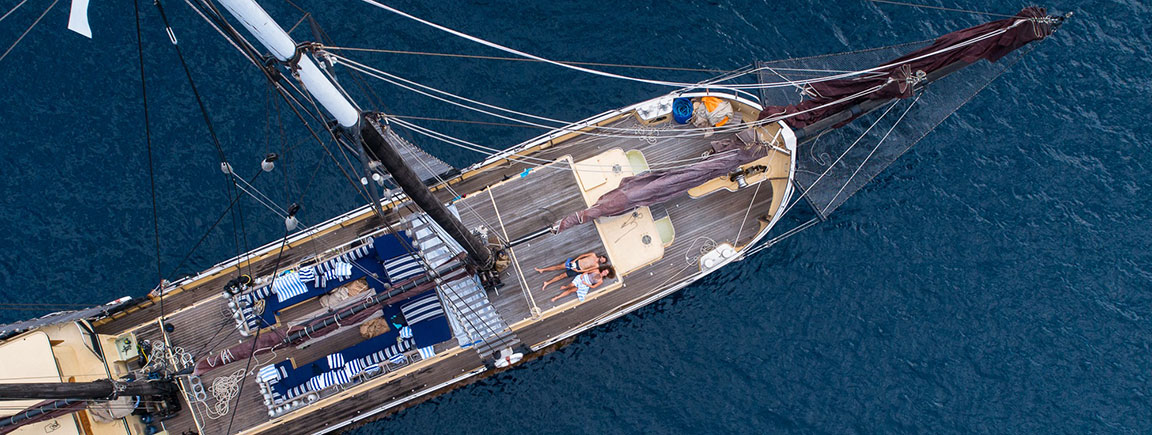
Adelaar Liveaboard is based in Komodo for the most part of the year
Oceanic Liveaboard
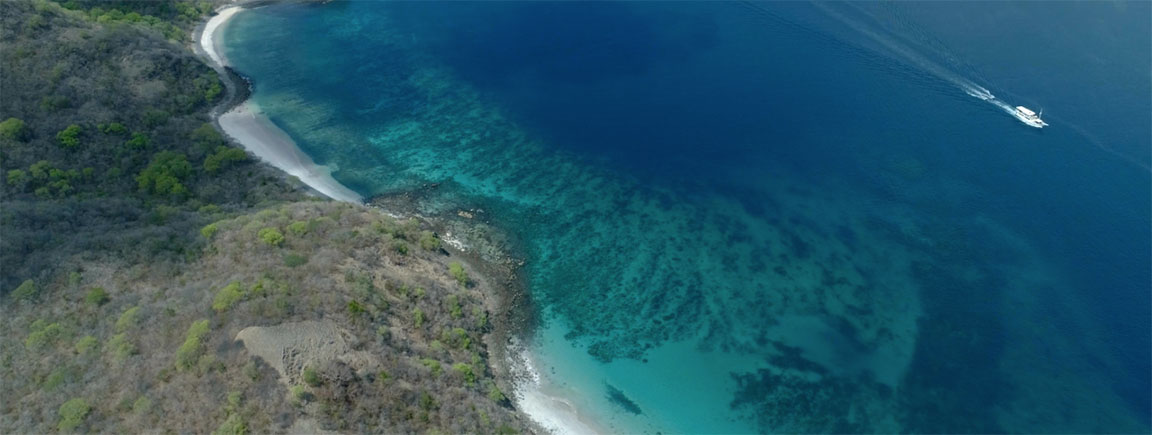
Oceanic Liveaboard has Komodo in their regular itineraries
Komodo's Northern waters generally provide better visibility year round. Fish is abundant everywhere but the rocks and reefs in areas of stronger current provide the best chances of spotting the bigger fish, especially sharks and other pelagic species. Komodo's Southern waters generally provide better visibility from December through April. Lower visibility occurs in the South during the dry season when oceanic up-welling and plankton blooms, attracts a wealth of marine life to Komodo, especially invertebrates. Highest temperatures in the south are during the rainy season.
5. HOW TO GET TO THERE
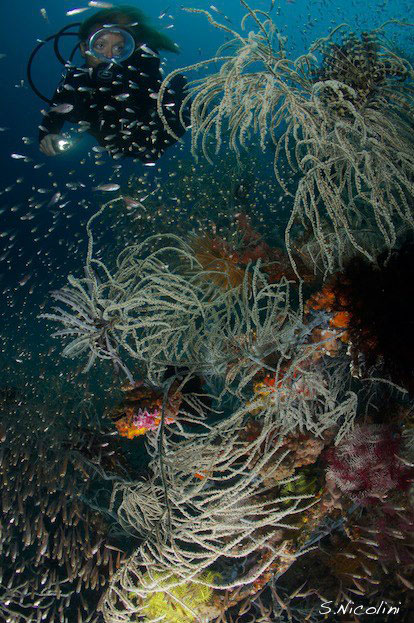
Airport: Divers generally enter the Komodo region via the airport of Labuan Bajo, once an small fishing village in Flores Island, now a busy town on the indonesian province of East Nusa Tenggara. International flights reach Jakarta or Bali, and from there a domestic flight will take you to Labuanbajo. Depending of your liveaboard itinerary considering Bima or Maumere airport via Jakarta or Bali. Weather: 27-32°C. Indonesia has two seasons: wet and dry. In most of Indonesia the wet season is from October to April and the dry from May to September. Nusa Tenggara’s climate is relatively dry with a light rainy season from November to April. Time zone: Lesser Sunda Islands GMT +8. Transit night & connecting flight: You may need to spend one night in transit in Indonesia before and/or after your cruise, depending on your domestic and international flight schedules. We have the most competitive airfares with the most convenient flight timetables, and hotels for all budgets. Does it seem complicated? Contact an operator who speaks your language and who can assist you in Indonesia. Feel free to contact us now!
6. KOMODO LUXURY CRUISES & CHARTERS
Even if diving and snorkeling are the main activities, Komodo offers many other interesting experiences for the surface interval. The islands of Komodo and Rinca are ideal for sea trekking. The Komodo dragon in the wild, small islets and secluded pink beaches can be discovered by boat. Reaching the summit of Padar will surely give you one of the greatest thrills of your entire life.
An excursion to Kalong Island to see the spectacular departure of thousands of fruit bats, also known as flying foxes, which at sunset leave their mangrove shelters to go in search of food on nearby Flores island.
Cruising Indonesia | The Liveaboard & Dive Specialists
Cruising Indonesia is committed to ensuring you not only a perfect diving holiday but also the best price guarantee. Contact us and we will arrange everything you need: every single details of your cruise reservation, the international & domestic flights, the ground services, an amazing tour extension...
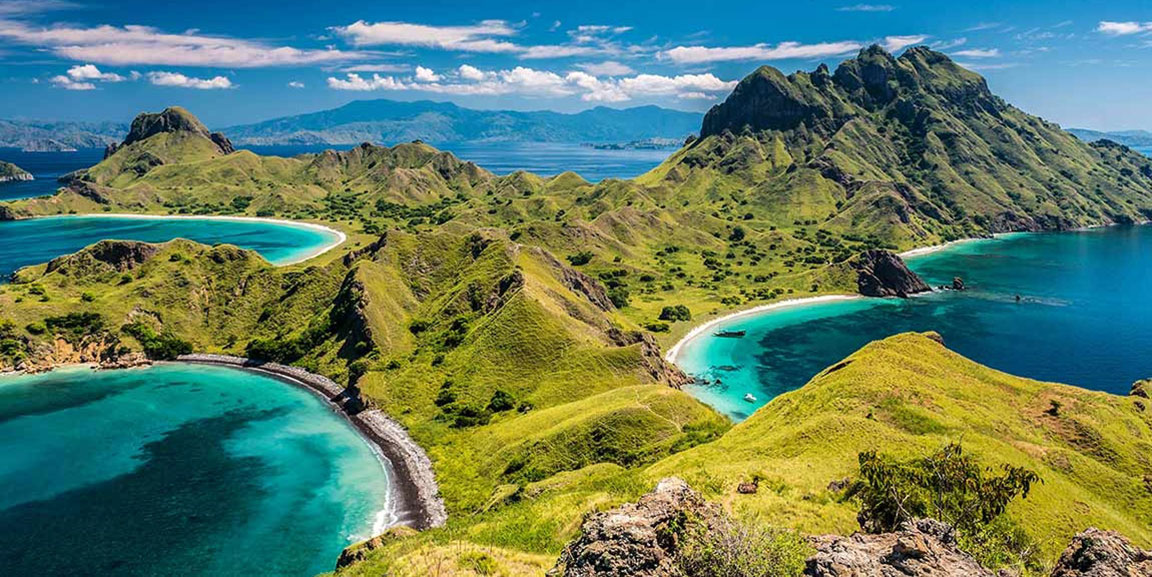
Reserve Komodo now!



